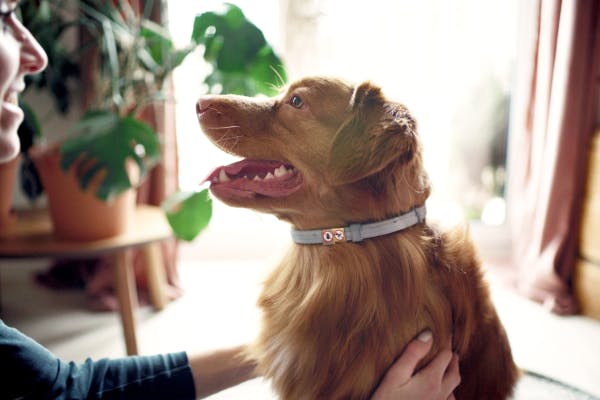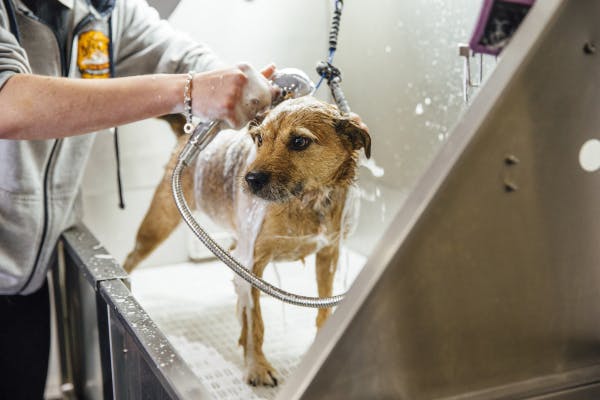learn about shock collars for dogs
Advantages and Disadvantages of Shock Collars for Dogs and Other Training Techniques
Dog shock collars can offer distance training, immediate focus, and quick feedback, but they might also cause pain, short-term behavior changes, aggression, tension in the relationship, and there are other options to consider.

Shock collars, also known as e-collars or electronic collars, are devices used in dog training that give a warning beep or vibration followed by a remote shock if the dog continues the unwanted behavior. While there are advantages to using shock collars for certain situations or behaviors, there are also significant downsides that you should think about before choosing this training method.
Understanding Shock Collars: Pros and Cons
Shock collars, also known as e-collars or electronic collars, are devices used in dog training. These devices deliver a warning beep or vibration followed by a remote shock if the dog doesn't stop the undesirable behavior. The shock level can range from a tickling sensation to a more painful shock.
Pros of Using Shock Collars
Distance Training: One of the advantages of shock collars is that they allow you to correct behavioral problems from a distance. Other training methods only work when you're close to your dog, but that's not the only time they might engage in unwanted behavior.
Immediate Attention: Electronic collars can get your dog's attention even when they're not close. This can be helpful when your dog sees something and runs after it while ignoring your calls.
Not Always Present: Another benefit is that you don't have to be there for the collar to work. When used with an electric fence, it can prevent aggressive behaviors, constant barking, and running through the neighborhood when you're not around.
Instant Feedback: Shock collars provide immediate feedback to your dog about their behavior, which can be helpful for learning.
Affordability: Compared to professional training services, e-collars are relatively affordable tools for behavior modification.
Cons of Using Shock Collars
Painful Experience: Although companies claim that their products are safe and don't really hurt pets, this is not entirely true. While it may not cause permanent physical damage or scars, it does cause discomfort which could potentially harm the trust between you and your pet.
Temporary Behavior Change: While shock collars might suppress undesirable behavior temporarily, they do not address the underlying problem causing this behavior.
Potential Aggression: Instead of teaching what behaviors are acceptable, shock collars might teach dogs that they are helpless and disempowered leading to depression, anxiety or aggression.
Relationship Strain: If dogs begin associating their owners with painful experiences due to the use of shock collars, this could strain their relationship with them.
Alternatives Available: There are plenty of options for training dogs that don't involve pain or fear-based methods such as positive reinforcement techniques.
While there may be some benefits to using shock collars for specific situations or behaviors, there are also significant drawbacks that should be considered before deciding on this method of training.
Different Types of Dog Collars and Their Features
Dog collars come in various types, each with unique features designed to address specific needs. Some are used for training purposes, while others help control barking or keep dogs within certain boundaries.
Bark Collars
Bark collars are designed to deter excessive barking in dogs. They detect when a dog is barking and respond with a corrective stimulus such as sound, vibration, or stimulation. The goal is to teach the dog when it is appropriate to bark and when it is not.
Shock Collars
Shock collars are a type of e-collar that uses static stimulation as their primary correction method. This type of collar is often used for more severe behavior issues.
Remote Control Collar
A remote control collar allows you to control your dog from a distance with the press of a button, providing more flexibility than other types of collars.
It's important to remember that each type of collar has its benefits and drawbacks, so it's crucial to choose one that aligns with your dog's specific needs and your training approach.
best shock collars for dogs
- our rating82 out of 100
- our rating80 out of 100
- our rating80 out of 100
Choosing the Right E-Collar for Your Dog
An e-collar, also known as an electronic collar or a remote training collar, is a device used for dog training. It has a collar with a receiver that fits around your dog's neck and a remote control. The remote sends signals to the receiver to give different levels of electrical stimulation to the dog's neck. This stimulation helps get your dog's attention or give feedback during training.
Using e-collars can be controversial in the dog training world. Although the stimulation from an e-collar might be uncomfortable, it should not cause pain or harm to your dog. Good quality e-collars have safety features to stop too much stimulation or accidental use.
When picking an e-collar for your dog, think about where your dog will be and what situations they will face. Consider why you want an e-collar and what new activities you can do once your dog has better obedience and control.
For example, if you want an e-collar because your dog runs away, think about what new activities you can do once your dog comes back when called. Will you take your dog off-leash hiking or to the beach? Do you hunt with your dog or plan to?
Remember that trees or hills can change how far a remote collar can reach. When companies say how far an e-collar can go, they mean on flat land with nothing in the way.
Think about if waterproof parts are important for how you live. Most receivers (the part on the collar) are waterproof now, but not all transmitters (the remote part) are.
Next, think about how sensitive your dog is to touch. This can help you decide if you need a low-to-medium power collar or a low-to-high power collar.
Lastly, look at other details like customer service after buying, warranty, and price when choosing an e-collar for your dog.
Using a Shock Collar to Train Your Dog: Best Practices
Training your dog with a shock collar requires careful attention and understanding of the tool. It is not about punishing your pet but about reinforcing good behavior and discouraging unwanted actions.
Shock collars work by delivering a slight jolt, vibration, or sound to your dog when they exhibit unacceptable behavior. The goal is to associate the unpleasant sensation with the negative action, encouraging them to stop engaging in such behavior.
Here are some best practices when using a shock collar for training:
Understand the Collar: Before using a shock collar, it is important to understand how it works and its different modes. Most collars offer various options like beeping, vibrations, and mild shocks. You can choose the one that suits your dog best.
Teach Basic Commands First: Make sure your dog understands basic obedience commands before introducing a shock collar. They should be able to follow commands like 'sit', 'lie down', 'stay', and 'come' without much difficulty.
Introduce Slowly: Start introducing the collar slowly to your dog. Begin with the stimulus on a low setting and gradually increase until they register it.
Use Positive Reinforcement: While using a shock collar, make sure to also use positive reinforcement techniques such as treats, praise, and toys to reinforce good behavior.
Choose the Right Collar Size: Pick a collar that fits snugly but not too tight on your dog's neck.
Ensure Safety Measures: Look for collars with safety features like automatic shut-off to prevent continuous shocks that could harm your pet.
Take Regular Breaks: Shock collars should not be used for extended periods of time and should be removed when not in use to prevent causing stress or discomfort to your pet.
Remember that patience is key when training dogs with shock collars as they need time to get used to it and understand what it means.
Better Ways to Train Dogs without Shock Collars
Dog training has changed a lot over the years, and now people are using more kind methods. Traditional tools like shock collars were once popular because they worked well, but now people are using other ways that focus on rewarding good behavior instead of punishing bad behavior.
Changing from Punishment to Rewarding Good Behavior
Lately, dog training has changed how it works. Old methods that caused pain or fear are being replaced by new ways based on understanding how dogs think and feel. Shock collars can stop bad behavior, but they can also hurt dogs and make them scared or stressed. Some experts say that these collars can make dogs more anxious and even aggressive.
Other Ways to Train Dogs
As shock collars become less popular, people are finding other ways to train dogs. These new ways use rewards to teach good behavior and include tools like clicker training, harnesses, head halters, and scent markers.
Clicker training uses a special sound - a "click" - to show the dog when it does something good. When the dog hears the click and then gets a reward right away, it learns that the click means it did something good. Harnesses and head halters help control a dog's movements without hurting or scaring them.
Real-Life Examples of Better Training Methods
These new ways of training dogs really work. For example, one person stopped using a shock collar on their Labrador and started using a front-clip harness with clicker training instead. The dog became more obedient and less anxious.
Today's dog training is not just about making dogs do what we want; it's about understanding how they think and feel. It's about building a strong relationship based on love and respect instead of fear.
A Happier Future for Dogs
As we move into this new time of dog training, it's important to keep promoting these better ways of training for the happiness of our dogs. Every dog is different, so their training should be different too. By using other ways to train dogs instead of shock collars, we can better understand our dogs and live together more happily.
What Experts Say
Famous veterinarian and animal behavior expert Dr. Sophia Yin believes that using rewards to train pets is the best way. According to Dr. Yin, using fear or pain can make a pet's life worse, while rewarding good behavior helps build trust and teaches pets in a kinder way.
Changing from Shock Collars to Better Methods
If you want to stop using a shock collar and try a new way of training your dog, it might be hard at first, but it is possible with patience. It's important to understand your dog's needs during this change and ask for help from professional trainers who can give you advice for your specific dog.







